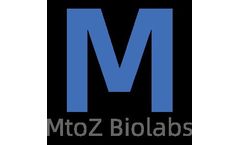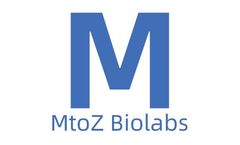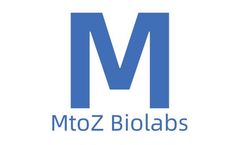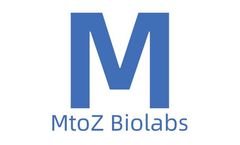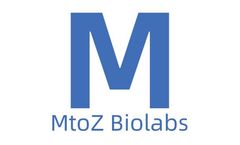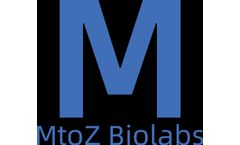Metabolic Bone Disease Articles & Analysis: Older
27 articles found
Recombinant protein drugs refer to protein products that originate from animals and plants and are developed through biotechnology research. These protein drugs exhibit certain biological activity and can prevent, diagnose, and treat diseases in humans, animals, and plants. Compared with small molecular drugs, recombinant protein drugs offer advantages such as high activity, high specificity, and ...
Understanding the complex world of drug discovery and development necessitates familiarity with key players in cellular communication. A pivotal group in this arena is G Protein-Coupled Receptors (GPCRs). These receptors play a crucial role in transmitting signals across cell membranes, significantly influencing numerous physiological processes. Consequently, GPCRs have become a central focus in ...
The advent of next-generation sequencing (NGS) has revolutionized the field of microbiome research, particularly through the analysis of 16S rRNA gene sequencing. This technique allows for a comprehensive understanding of microbial communities, providing insights into their composition and functional potential. This article outlines best practices for the bioinformatics analysis of 16S rRNA ...
MicroRNAs (miRNAs) are small, non-coding RNA molecules that play a crucial role in the regulation of gene expression. Their ability to modulate various biological processes makes them significant players in the field of molecular biology and medicine. Among the various tools utilized in research and therapeutic applications, miRNA mimics have emerged as powerful instruments for manipulating and ...
Peptide drugs are bioactive protein fragments composed of short chains of amino acids. Due to their high efficiency, specificity, and relatively low toxicity and immunogenicity, they occupy an important position in modern medicine and drug development. They have shown great potential in treating various diseases, such as cancer, autoimmune diseases, infectious diseases, and metabolic disorders. ...
Recombinant protein drugs refer to protein products derived from animals or plants and developed through biotechnology research. These proteins possess certain biological activities and can prevent, treat, and diagnose diseases in humans, animals, and plants. Compared to small molecule drugs, protein drugs have advantages such as high activity, high specificity, and low toxicity, making them ...
Peptidomimetics are structural analogs of peptides or proteins that mimic their biological activities. They are designed to overcome limitations associated with peptides, such as poor stability and bioavailability by preserving or enhancing their functions. Peptidomimetic development involves the design and synthesis of molecules that mimic three-dimensional structures and functional groups of ...
Differentially expressed proteins refer to proteins that show significant changes in their expression levels in different biological samples or under different treatment conditions. Observing such differential expression is crucial for understanding cellular physiology and disease mechanisms. For example, some proteins may be upregulated or downregulated in health and disease states, or between ...
Secretory proteins refer to those proteins that are synthesized by cells and secreted to the outside of the cell. They play an important role in many biological processes such as signal transduction, cell communication, immune response, hormone secretion, and so on. These proteins are usually synthesized in the endoplasmic reticulum (ER) of the cell and then transported out of the cell through a ...
Oxidative phosphorylation is the process by which mitochondria produce ATP (adenosine triphosphate) in the cellular respiration chain. It is a crucial step in cellular energy metabolism. In this process, electrons are transferred from one carrier to another through a series of oxidation-reduction reactions and are ultimately passed to oxygen to form water. The energy released by this electron ...
Trillions of microorganisms live in the gastrointestinal tract, far outnumbering the body's own cells. The intestinal flora is involved in many physiological and pathological processes in the host, including digestion and absorption of food, metabolism of certain nutrients and pharmaceutical compounds, development of host immunity, intestinal inflammatory states, and more. Dysbiosis of the ...
Introduction to Microbial Epigenetics Epigenetics has been defined as the study of stable alterations in gene expression potentials that arise during development and cell proliferation, or alterations in DNA function without alterations in DNA sequence. Modern epigenetic features refer to the alteration of DNA and/or associated proteins without nucleotide sequence variance, which transmits the ...
Diabetes, specifically Type 1 and Type 2 Diabetes Mellitus, remains one of the most commonly encountered metabolic diseases worldwide. The complexity and diversity of these conditions necessitate the development of detailed medical models for a comprehensive understanding of the diseases. Over time, Type 1 and Type 2 Diabetes Mellitus Models, Metabolic Disease Models, and generalized Diabetes ...
AMPK (Adenosine 5'-monophosphate (AMP)-activated protein kinase), as an important kinase regulating energy homeostasis, is one of the central regulators of eukaryotic cell and organism metabolism. It is responsible for regulating cellular capacity input and output and maintaining the smooth functioning of cellular physiological activities. AMPK is also a key protein involved in various signaling ...
In recent years, bioconjugation has emerged as a powerful strategy for improving drug delivery and enhancing therapeutic efficacy. By linking drugs to various biological entities, such as proteins, antibodies, nanoparticles, or targeting moieties, bioconjugation enables precise and targeted delivery of therapeutic agents to desired sites. This article aims to provide an overview of different ...
Previously, it was thought that glial cells, which support neuronal activity, metabolize most of the glucose in the brain. However, by using induced pluripotent stem cells, the researchers found that neurons were able to take up glucose and process it into smaller metabolites. In mice, normal function of neurons depends on glycolysis. The findings could help develop new treatments for ...
This article provides a brief introduction to good practices for the bioinformatics analysis of 16S rRNA sequencing by NGS (next-generation sequencing). The bioinformatics pipeline involves two main stages: the preprocessing of data (quality control) and quantification (including taxonomic profiling and predictive metagenomics profiling). Preprocessing to eliminate uninformative data Removal of ...
The epigenome is composed of chemical markers and proteins that can attach to DNA and direct the function of gene regulatory elements, controlling the production of proteins in specific cells, among other roles. Common epigenomic modifications include methylation of the nucleotide cytosine and histones or acetylation and phosphorylation of histones. All of these modifications do not change the ...
Mitochondria are important organelles of eukaryotic cells and play a key role in the regulation of cellular energy metabolism, biosynthesis and cell death (including apoptosis and programmed cell necrosis). In addition, mitochondria are involved in important physiological processes such as tricarboxylic acid cycle, fatty acid and amino acid oxidation, and regulation of calcium ion homeostasis. ...
Situated at the right hand part of your abdominal cavity, liver is the largest organ of your body. This dark brown organ weighs around 1.2 kg. You should know that all the blood which leaves from stomach and your intestine passes through this organ. Liver is solely responsible for carrying away waste products from your blood. Liver is important in your body for a number of reasons, such as, it ...

